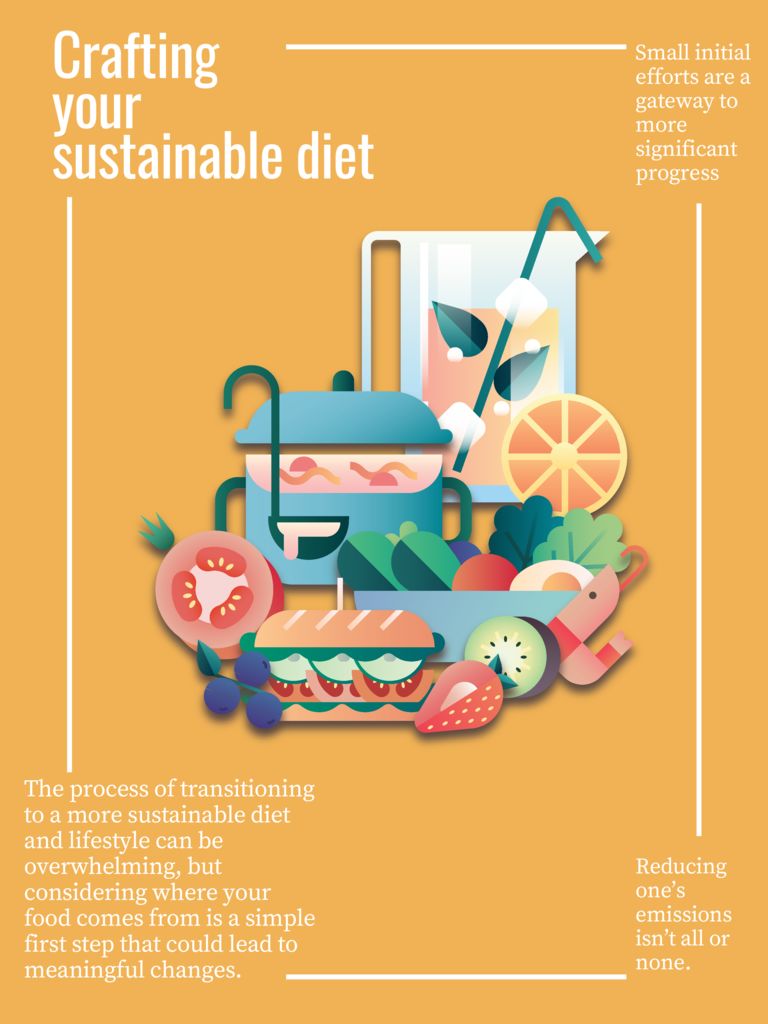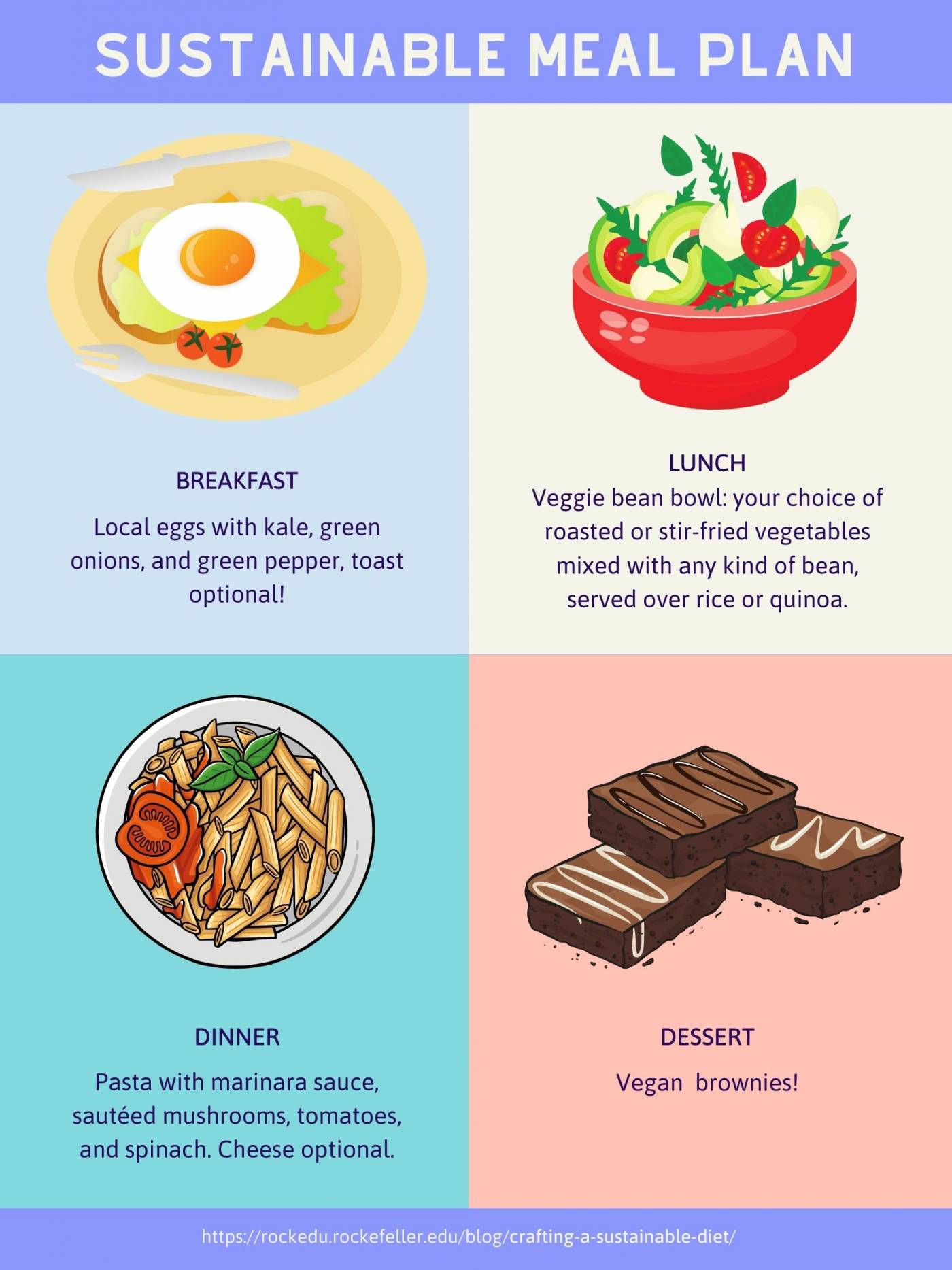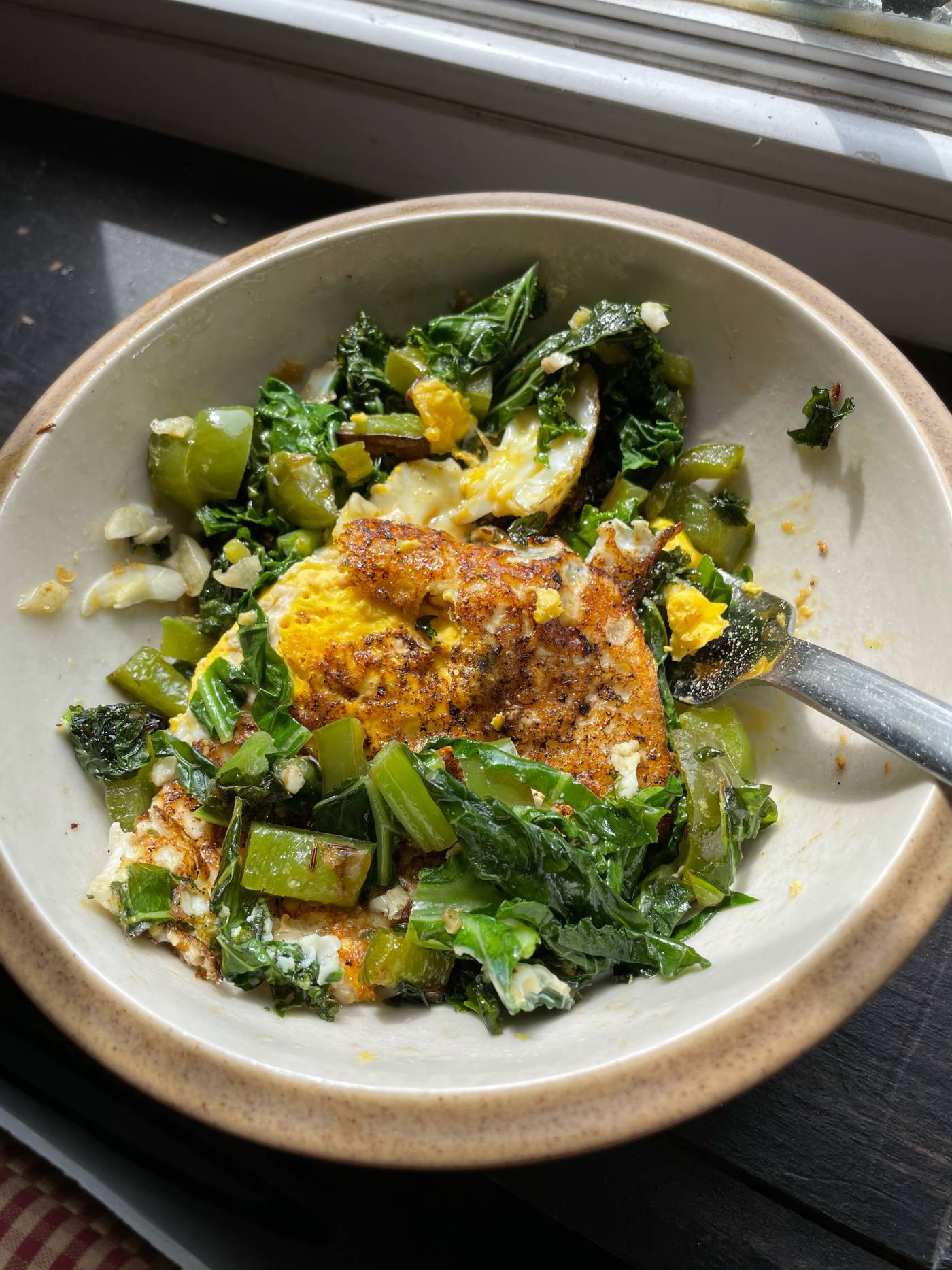Crafting a Sustainable Diet
It’s important to judge one’s lifestyle and diet on multiple criteria, as not all “green” foods are created equal. For example, though plant-based meat alternatives are better for the environment than beef, they produce the same amount of emissions as chicken. Some meat alternatives are also cost-prohibitive for many people interested in exploring a vegan or vegetarian lifestyle.
Ubiquitous marketing, insufficient education, and a cultural expectation to consume environmentally unfriendly foods turns sustainable living into a full-time job. Luckily, there are resources that do some of the work for you. This tool will calculate the carbon emissions of popular foods in omnivorous, vegetarian, and vegan diets.

Highly processed foods like Oreos, though vegan and relatively inexpensive, also have caveats aside from the obvious health drawbacks. “The most important thing to think about is where your food comes from and the other humans involved in its production,” Tim Nolan, a recent graduate of SUNY Plattsburgh and environmental activist, said. “Think about the hundreds of people it took to make each of those ingredients.”
Crafting a sustainable meal plan can be easy and may open the door to trying new foods and recipes. Here is an example of one day of sustainable eating:


Local eggs cooked in sunflower oil with kale, green onions, and green pepper seasoned with garlic, pepper, cumin, and fennel. Photo credit Tim Nolan.
For inspiration, sample recipes from vegetarian food blogs like this one, or use a vegetarian meat substitute in one of your favorite recipes. Also, remember that not all meat substitutes are created equal! Just like improper cooking technique can ruin a steak or chicken breast, cooking tofu or seitan for the first time might not go as planned. Stick with it, and you’ll learn to love the versatility and flavor of these vegan proteins.
The process of transitioning to a more sustainable diet and lifestyle can be overwhelming, but considering where your food comes from is a simple first step that could lead to meaningful changes.





